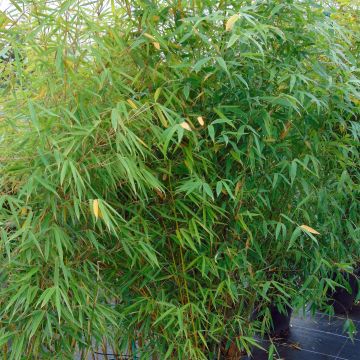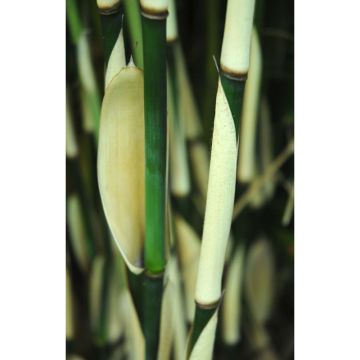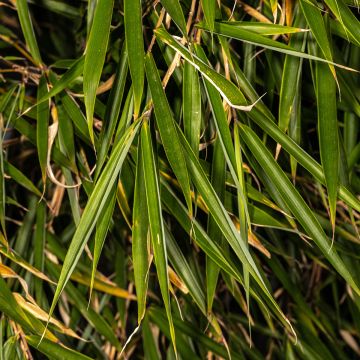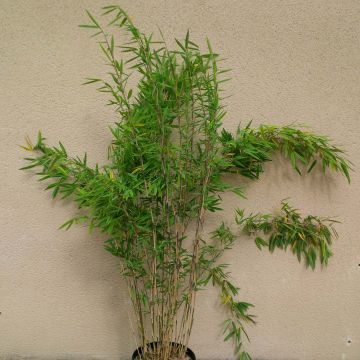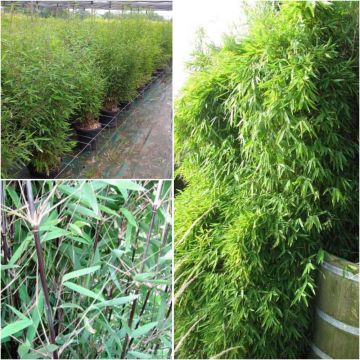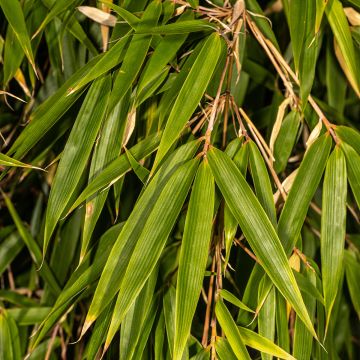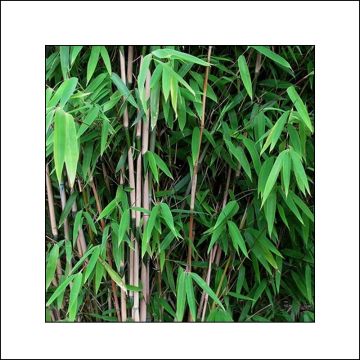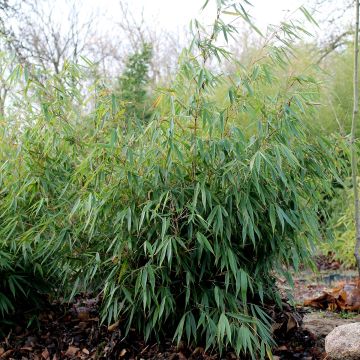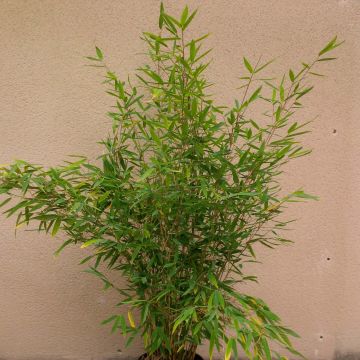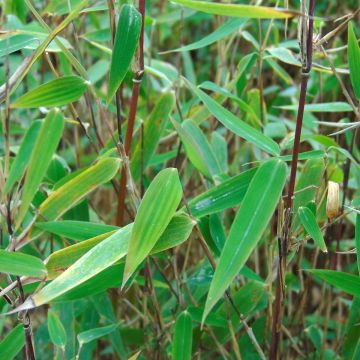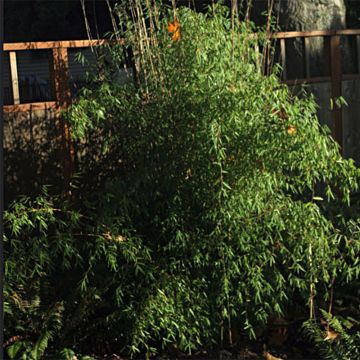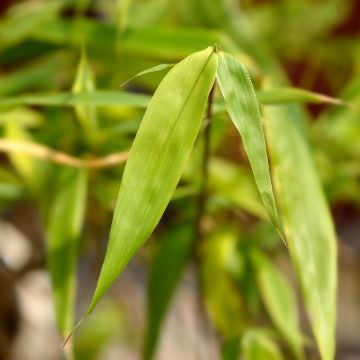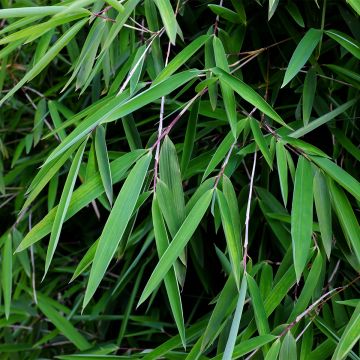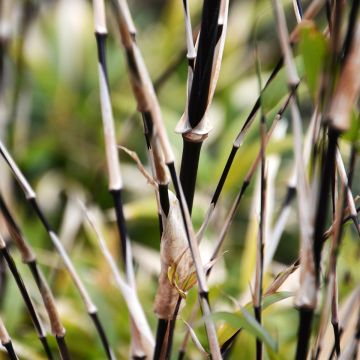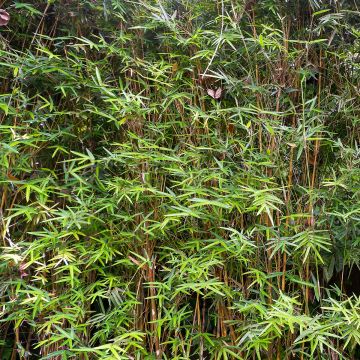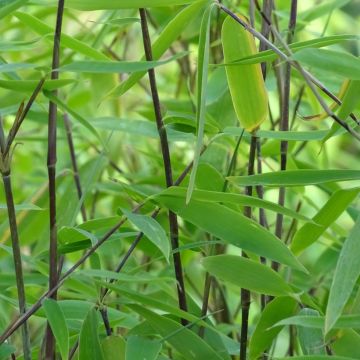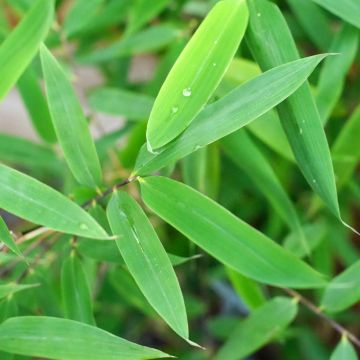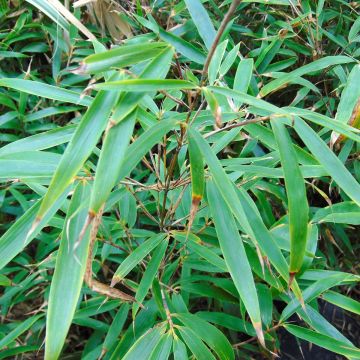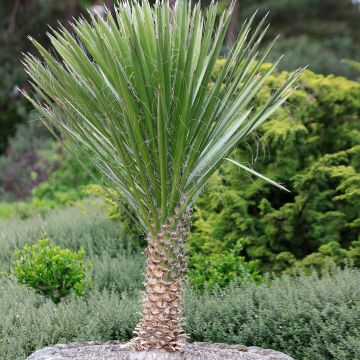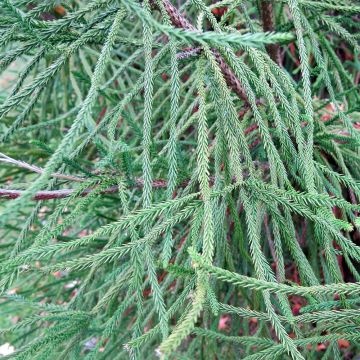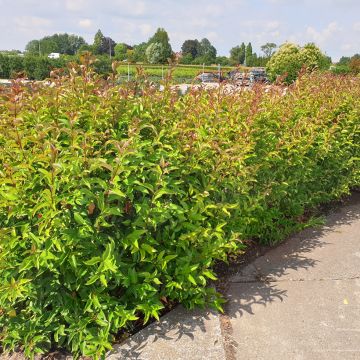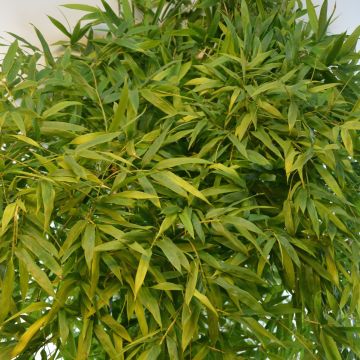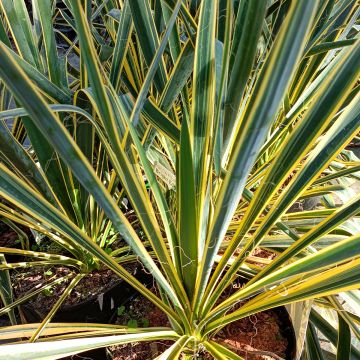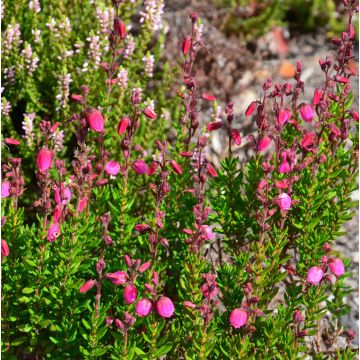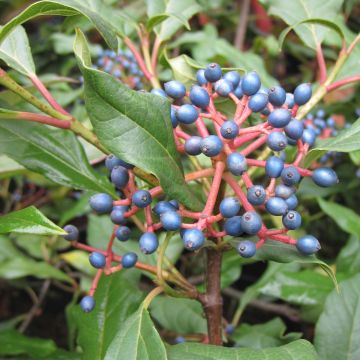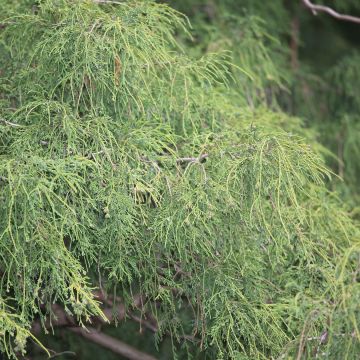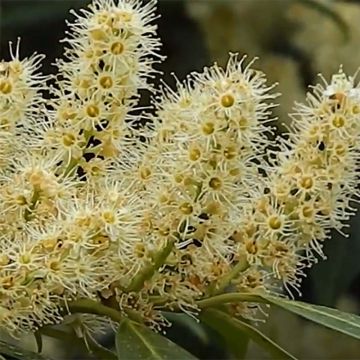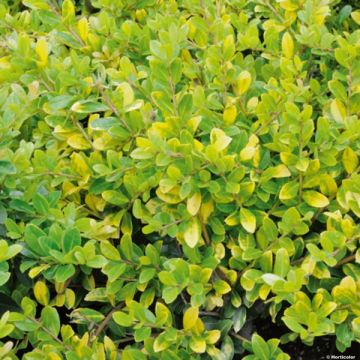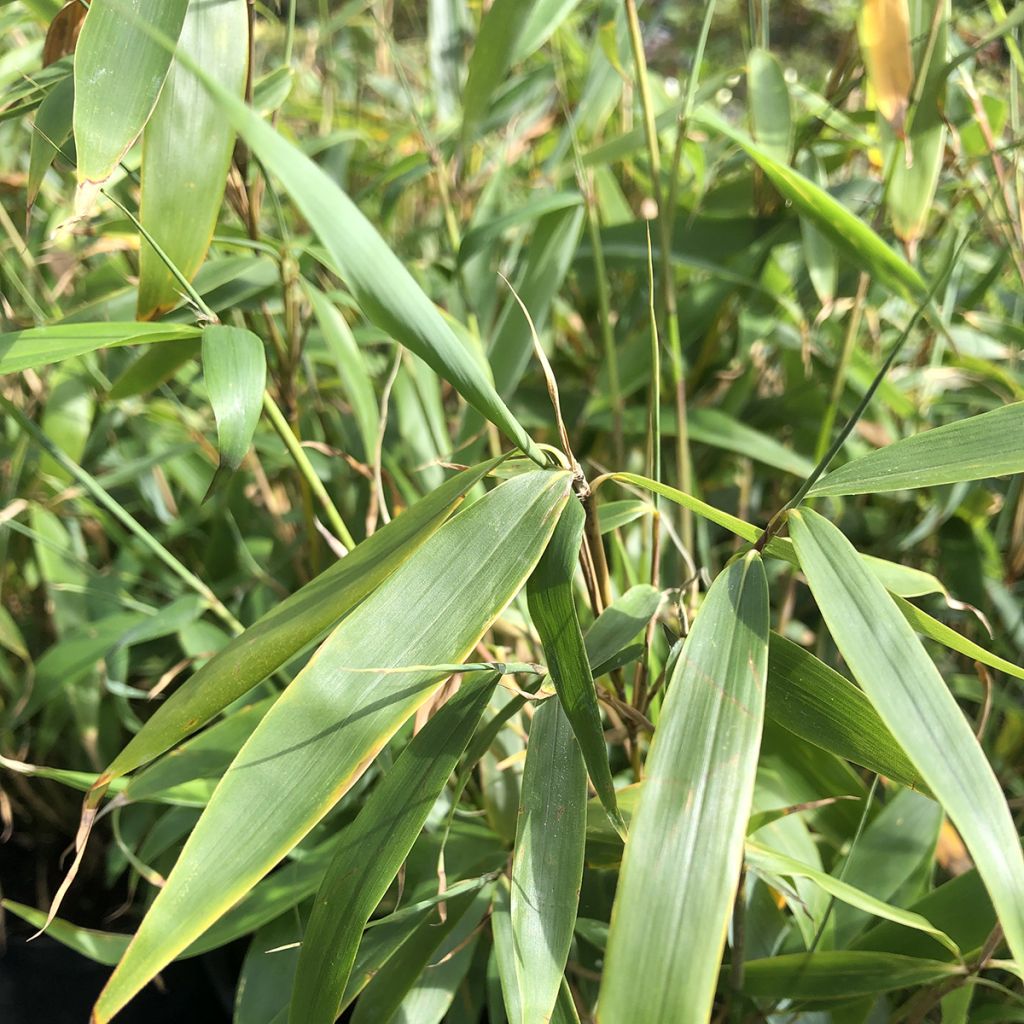

Fargesia robusta Tauro
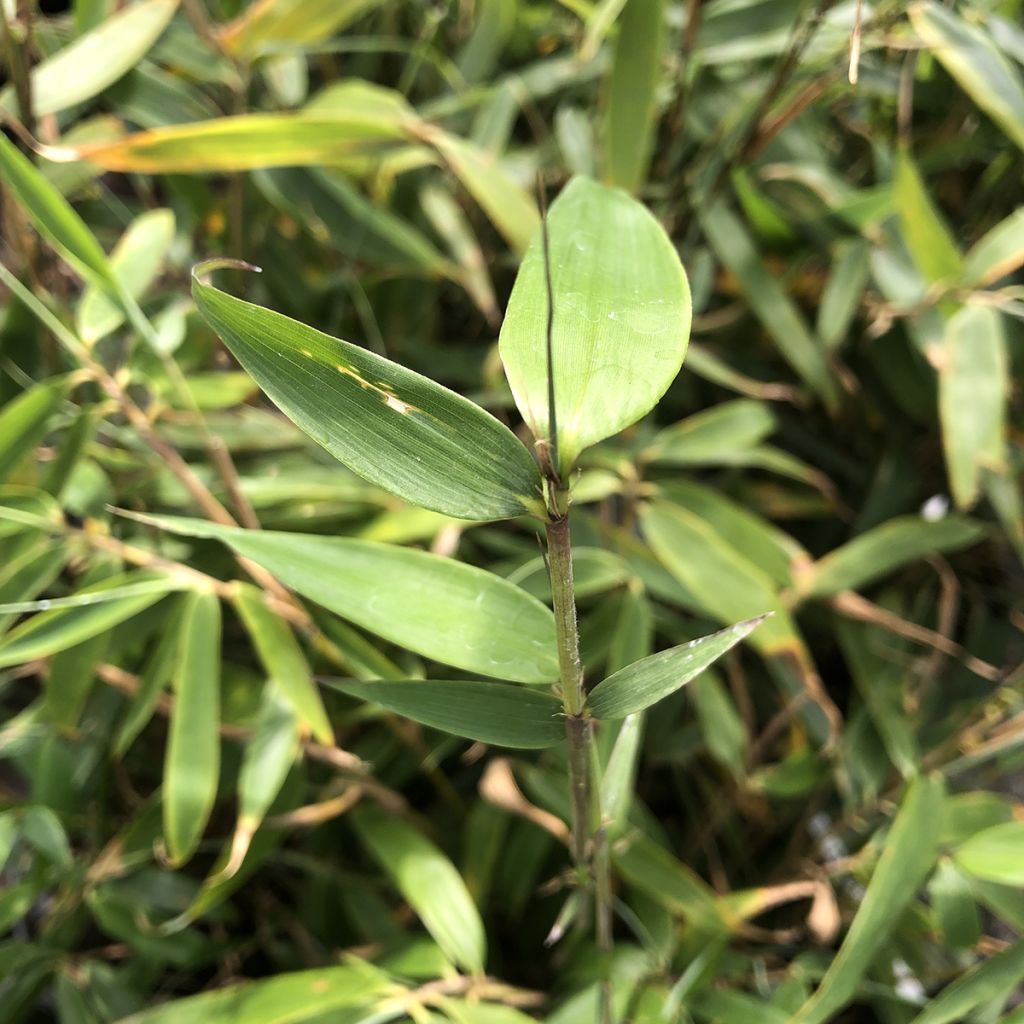

Fargesia robusta Tauro
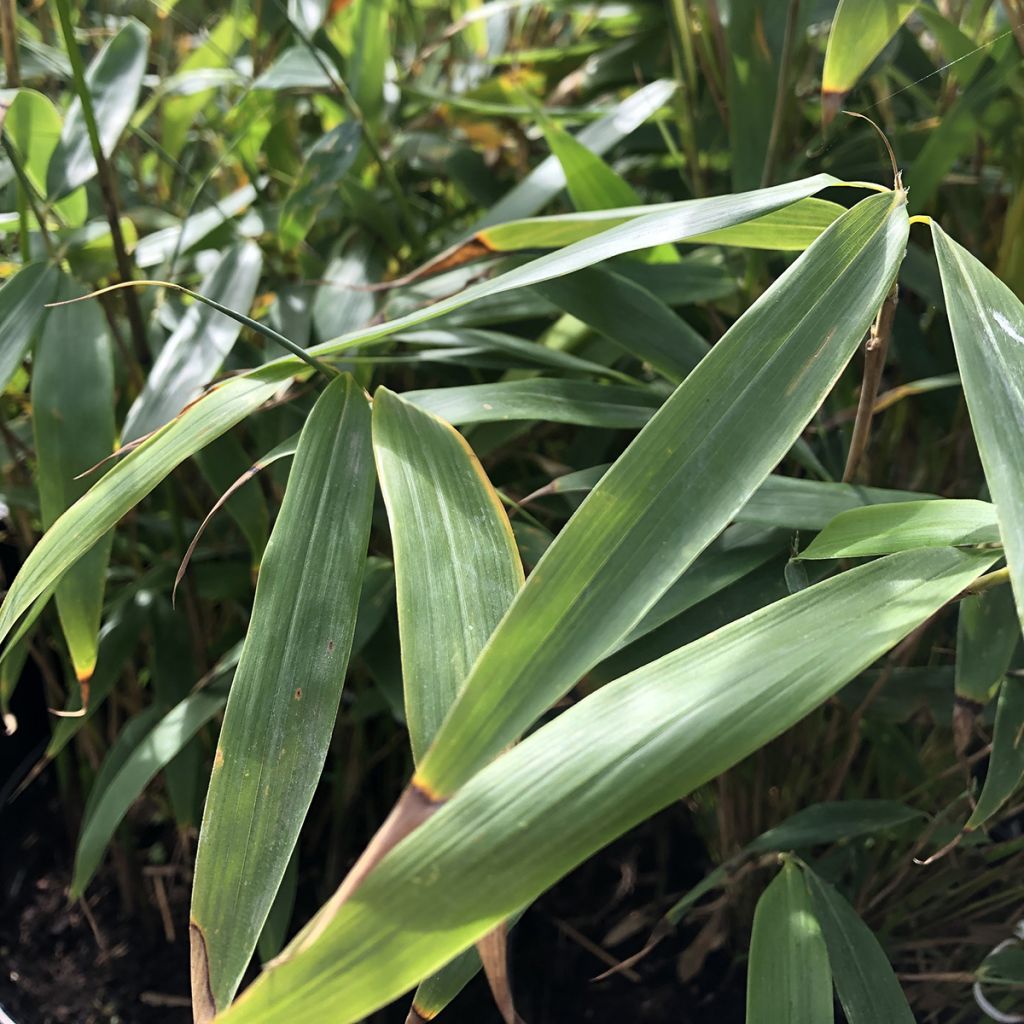

Fargesia robusta Tauro
Fargesia robusta Tauro
Fargesia robusta Tauro
Wolong Bamboo
Why not try an alternative variety in stock?
View all →This plant carries a 24 months recovery warranty
More information
We guarantee the quality of our plants for a full growing cycle, and will replace at our expense any plant that fails to recover under normal climatic and planting conditions.
From €5.90 for pickup delivery and €6.90 for home delivery
Express home delivery from €8.90.
Oversize package: home delivery by special carrier from €6.90 per order..
Express home delivery from €8.90.
Does this plant fit my garden?
Set up your Plantfit profile →
Description
The Fargesia murielae Tauro is a non-spreading bamboo, usable as a standalone plant, but especially ideal for forming a hedge. Within four or five years, its dense vegetation will reach a height of 3.50 to 4 m, without spreading uncontrollably. Resistant to cold, comfortable in any good garden soil preferably neutral to acidic, this variety adapts to many regions. It does not require the purchase of a rhizome barrier (while keeping in mind that clumps expand over the years by emitting new shoots, but these shoots do not appear at a distance as in spreading bamboos).
The Fargesia murielae is a plant in the Poaceae family, a type of grass with woody stems that develops from a non-spreading rhizomatous stump, known as clumping. In this type of bamboo, the very short internode rhizomes develop slowly at the periphery of the stump, which gradually expands, but they also develop towards the center of the clump, which remains very dense without thinning in the center. This umbrella bamboo, also known as Sinarundinaria murielae, is native to the mountains of central China, and is one of the most hardy bamboos (-25°C). It has survived harsh winters in Eastern European countries.
This cultivar 'Tauro' is a recent selection, similar to its cousin Fargesia robusta. It has relatively fast growth once established, forming a compact clump at the base, spreading upwards, reaching a height of 3.5 to 4 m. The top reaches a diameter of about 1.50 m (4 ft 11 in), or even more, and can be limited by light pruning if necessary. The canes, also called culms, are upright, slender, 1 cm (0.4 in) in diameter, but very strong, and green in colour. Over the months, they take on a reddish colour that is quite decorative. The evergreen leaves are larger and wider than those of other varieties. They are lanceolate and taper at the ends, with a light and vibrant green colour.
The Fargesia murielae Tauro, with its dense stems and foliage, evergreen and relatively fast growth, is perfect for creating a decorative or protective hedge. It is resistant to wind, forming a completely opaque vegetation curtain, with a certain noise reduction efficiency. It can also be planted in a large pot or container on a terrace.
An inherently graphic plant, the umbrella bamboo will elegantly enhance a contemporary garden. Excellent for forming a background curtain behind a water feature, which provides it with welcome humidity, it is also valuable in a Japanese-style or exotic garden. It can be associated with plants with large leaves that contrast with its fine foliage, while adding a touch of tropical appearance to a temperate garden. The Gunnera manicata whose common name of giant Brazilian rhubarb accurately describes its general appearance, the Tetrapanax papyrifera 'Rex' with its immense palmate leaves and original cut, or in a smaller format, the Rodgersia aesculifolia, perennial plants with leaves resembling those of the chestnut tree are well suited.
Report an error about the product description
Plant habit
Foliage
Botanical data
Fargesia
robusta
Tauro
Poaceae
Wolong Bamboo
Cultivar or hybrid
Other Fargesia
Planting and care
The Fargesia murielae Tauro tolerates full sun, but can also be planted in partial shade. Plant this bamboo in a rich soil that remains slightly moist in summer, rather heavy and retains water well (as a guideline, the mature plant requires about 20 liters of water per week in hot weather and 10 liters the rest of the year). This Fargesia will grow in neutral or slightly acidic soil, preferably without limestone. If necessary, replace the soil in your garden with good potting soil. Plant in spring or autumn and for creating a hedge, space the plants every 60 to 80 cm (23.6 to 31.5 in) to achieve a dense green curtain.
In a pot, monitor watering, especially when the foliage is very abundant, and from early March to mid-April, apply 2 handfuls of lawn fertilizer at the base of your non-running bamboo. Its foliage will be greener. This bamboo tolerates pruning very well, so its width can easily be limited with shears to maintain a narrow hedge.
Like all other Fargesia, this non-running bamboo does not require the installation of anti-rhizome barriers when planting. It retains its green foliage throughout the winter and loses some leaves throughout the year, more so in late autumn. These accumulate at the base of the culms, thus forming a protective mulch against soil dehydration which is best left in place.
Planting period
Intended location
Care
This item has not been reviewed yet - be the first to leave a review about it.
Evergreen shrubs
Haven't found what you were looking for?
Hardiness is the lowest winter temperature a plant can endure without suffering serious damage or even dying. However, hardiness is affected by location (a sheltered area, such as a patio), protection (winter cover) and soil type (hardiness is improved by well-drained soil).

Photo Sharing Terms & Conditions
In order to encourage gardeners to interact and share their experiences, Promesse de fleurs offers various media enabling content to be uploaded onto its Site - in particular via the ‘Photo sharing’ module.
The User agrees to refrain from:
- Posting any content that is illegal, prejudicial, insulting, racist, inciteful to hatred, revisionist, contrary to public decency, that infringes on privacy or on the privacy rights of third parties, in particular the publicity rights of persons and goods, intellectual property rights, or the right to privacy.
- Submitting content on behalf of a third party;
- Impersonate the identity of a third party and/or publish any personal information about a third party;
In general, the User undertakes to refrain from any unethical behaviour.
All Content (in particular text, comments, files, images, photos, videos, creative works, etc.), which may be subject to property or intellectual property rights, image or other private rights, shall remain the property of the User, subject to the limited rights granted by the terms of the licence granted by Promesse de fleurs as stated below. Users are at liberty to publish or not to publish such Content on the Site, notably via the ‘Photo Sharing’ facility, and accept that this Content shall be made public and freely accessible, notably on the Internet.
Users further acknowledge, undertake to have ,and guarantee that they hold all necessary rights and permissions to publish such material on the Site, in particular with regard to the legislation in force pertaining to any privacy, property, intellectual property, image, or contractual rights, or rights of any other nature. By publishing such Content on the Site, Users acknowledge accepting full liability as publishers of the Content within the meaning of the law, and grant Promesse de fleurs, free of charge, an inclusive, worldwide licence for the said Content for the entire duration of its publication, including all reproduction, representation, up/downloading, displaying, performing, transmission, and storage rights.
Users also grant permission for their name to be linked to the Content and accept that this link may not always be made available.
By engaging in posting material, Users consent to their Content becoming automatically accessible on the Internet, in particular on other sites and/or blogs and/or web pages of the Promesse de fleurs site, including in particular social pages and the Promesse de fleurs catalogue.
Users may secure the removal of entrusted content free of charge by issuing a simple request via our contact form.
The flowering period indicated on our website applies to countries and regions located in USDA zone 8 (France, the United Kingdom, Ireland, the Netherlands, etc.)
It will vary according to where you live:
- In zones 9 to 10 (Italy, Spain, Greece, etc.), flowering will occur about 2 to 4 weeks earlier.
- In zones 6 to 7 (Germany, Poland, Slovenia, and lower mountainous regions), flowering will be delayed by 2 to 3 weeks.
- In zone 5 (Central Europe, Scandinavia), blooming will be delayed by 3 to 5 weeks.
In temperate climates, pruning of spring-flowering shrubs (forsythia, spireas, etc.) should be done just after flowering.
Pruning of summer-flowering shrubs (Indian Lilac, Perovskia, etc.) can be done in winter or spring.
In cold regions as well as with frost-sensitive plants, avoid pruning too early when severe frosts may still occur.
The planting period indicated on our website applies to countries and regions located in USDA zone 8 (France, United Kingdom, Ireland, Netherlands).
It will vary according to where you live:
- In Mediterranean zones (Marseille, Madrid, Milan, etc.), autumn and winter are the best planting periods.
- In continental zones (Strasbourg, Munich, Vienna, etc.), delay planting by 2 to 3 weeks in spring and bring it forward by 2 to 4 weeks in autumn.
- In mountainous regions (the Alps, Pyrenees, Carpathians, etc.), it is best to plant in late spring (May-June) or late summer (August-September).
The harvesting period indicated on our website applies to countries and regions in USDA zone 8 (France, England, Ireland, the Netherlands).
In colder areas (Scandinavia, Poland, Austria...) fruit and vegetable harvests are likely to be delayed by 3-4 weeks.
In warmer areas (Italy, Spain, Greece, etc.), harvesting will probably take place earlier, depending on weather conditions.
The sowing periods indicated on our website apply to countries and regions within USDA Zone 8 (France, UK, Ireland, Netherlands).
In colder areas (Scandinavia, Poland, Austria...), delay any outdoor sowing by 3-4 weeks, or sow under glass.
In warmer climes (Italy, Spain, Greece, etc.), bring outdoor sowing forward by a few weeks.

































